Renaissance Art

Accento
The power of Renaissance art, today.
Words by Kristal Trotter
When thinking about the Renaissance, many of us have the same reaction to the visual cues this era signals. An artistic, cultural, political and economic “rebirth” passed down from 1500s Europe, it proves that just like the moving images in television and cinema, or the glossy pages of the magazines, art, too, influences the way we perceive the world.
It doesn’t matter if you can name works beyond the David of Michelangelo, or the Mona Lisa of Leonardo Da Vinci, it’s about recognizing the underlying message of European aristocracy, unequalled mastery, and this superior vision of mankind at the center of everything, that matters the most.
For many people who admire this culture from afar, thoughts of the Renaissance prompts a fantasy stroll in an Italian piazza, eating gelato surrounded by statues of Greek Roman gods. It’s certainly kept alive thanks to its allure to tourists and art enthusiasts, but history tells a more comprehensive story than what is discussed during tour guides, art classes, or other popular references to this time period. Discussions around hidden Renaissance figures of color are becoming more frequent, challenging this idea of spaces historically perceived exclusively as ‘white’ in popular representations of history, and widening the lens on this era allows for more introspective reflection.
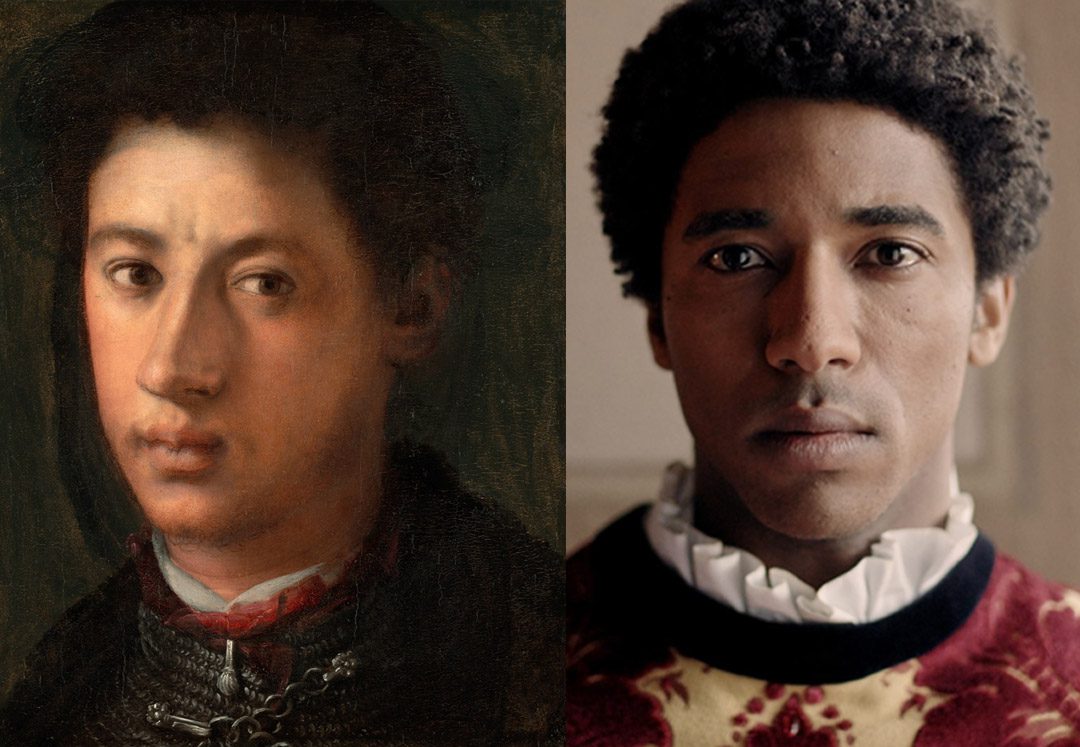
Coming off the heels of famed Netflix series Bridgerton, in which Italian actress, screenwriter and director Daphne Di Cinto played the Duchess of Hastings, Di Cinto drew inspiration from the historical fiction of London high society to look into her own Italian history. It turns out that today’s multi-racial and multi-ethnic Italians are not just a thing of the present, but of the past, too. Learning of the existence of Alessandro de’ Medici, a Black Italian noble and member of the famed Medici family, was shocking. The first duke of Florence might have been the son of Giulio de’ Medici and an enslaved African woman, and after his assassination, Cosimo I de’ Medici took his place. It comes to no surprise then, when studying the Florentine banking dynasty from the history books, that Alessandro de’ Medici’s story is summed up in a blurb – at best – and his African heritage rarely mentioned, all overshadowed by Cosimo I de’ Medici’s rise to power.
Di Cinto made a short film about this Renaissance figure in ‘Il Moro’ and it’s personal. It’s a way for the younger generation to learn about the Italians of the past who looked like them, but also to show that Black people in Europe were not just enslaved people, they were also royalty. All knowledge that Di Cinto would have wanted growing up in Italy. In 22 minutes, Italian actor Alberto Malanchino brings the duke to life – in part due to his striking resemblance – making history feel so contemporary and relevant.
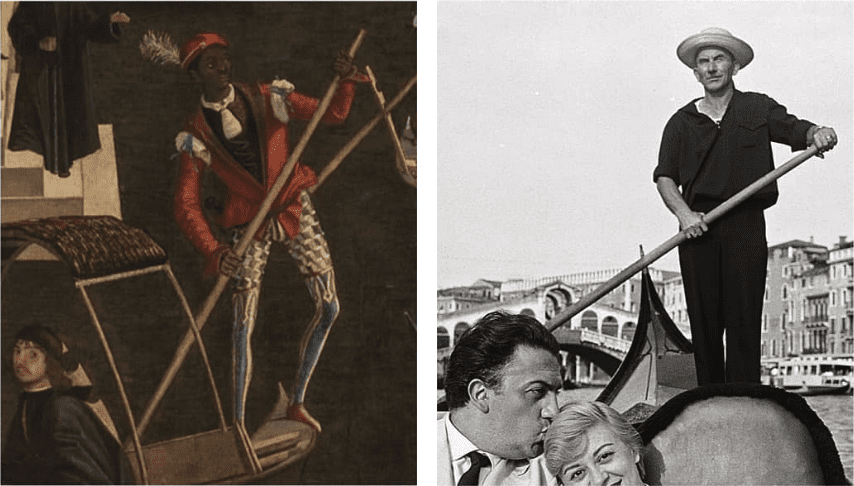
Theophilus Marboah, an artist born and raised in Verona in a family of Ghanaian decent, is a visual researcher who focuses on the ways in which the Black body is represented in Western art and in an Italian context. His Instagram page initiates conversations around the juxtaposition of subjects and objects in art, on what is deemed beautiful, and on the power of images as a whole.
It’s been interesting to see what Afro-Italians look for when searching for representation in art. It’s not about reimagining, but about studying what once was, and then showcasing their findings under a dignified light to the world. With the help of research platforms like Black History Month Florence and Griot Magazine, to see Blackness represented is like a compass that provides a sense of direction while navigating Italian society; there’s a sense of urgency in wanting to see Black people portrayed, and it comes with no longer wanting to be invisible in plain sight.
Conversations on representation in art coming directly from Italy has prepared me to better understand the power of Renaissance inspired art outside of Europe, specifically in the cultural context of the United States, which is also informed by my time living in this country.
In a 2021 exhibition at The Met that explored the politics, patronage and power in Medicean Florence, Max Hollein, Marina Kellen French Director of The Met, said that the exhibition celebrated “the achievements of the painters and sculptors responsible for these memorable masterpieces from Renaissance Italy,” and while it also explored the historical, social, and political context of these works, it invited us to “more fully appreciate their artistic relevance and their role in culture and society.”
I would like to add that it’s also worth appreciating the artistic relevance of works of American artists like Kehinde Wiley, Harmonia Rosales and Thelonious Stokes, who’s paintings within the contemporary, social, and political context of the U.S. demonstrates how images can take a different meaning when art intersects geography. These fine artists play with the language of power, and the monumental size of their work is a point to say “we are in deep crisis,” as Wiley stated. With untold stories and the need for a new vision of self, Renaissance inspired art has become a commentary on today’s society. By imitating and replacing prominent and revered figures with Black people, and by reassigning value to subjects who are no longer objects in the background, these artists are shifting the way we move in the world and view Black bodies.
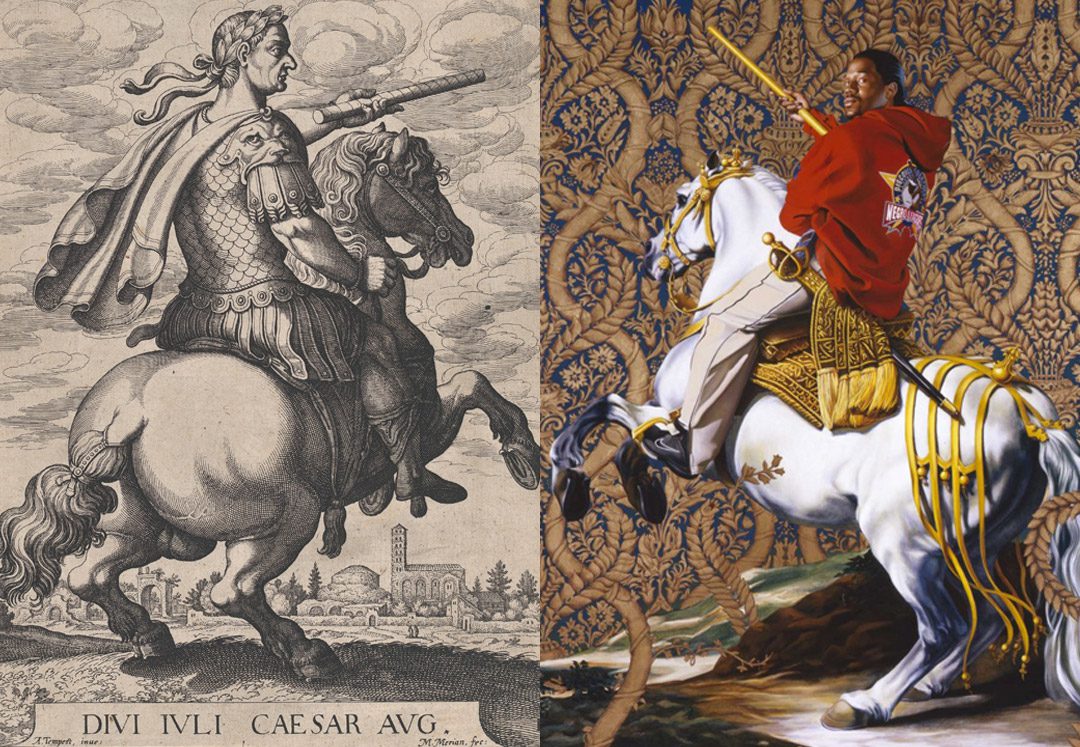
It was in 2001, in Harlem, that Kehinde Wiley started thinking about portraiture and how it relates to choice. After seeing the printed image of a young Black man that had fallen out of a police car, a mugshot, Wiley realized that the beautiful Renaissance portraits of the past have so many different ways in which the sitter decides how they want to be perceived, while this young Black man could not. How to breathe life into a mugshot, a portrait, was the challenge that informed Wiley’s new series of works. He began to invite people from Harlem to look through his art history books, to choose from royal and aristocratic portraits, and have them decide how they wanted to be portrayed. The results are erect postures of domination, like reimagining Antonio Tempesta’s ‘Emperor Julius Caesar on Horseback,’ but also images of slain bodies, referencing religious images of the fallen Christ, or fallen soldiers, to portray the lost lives of Black Americans in the visual language of the sacred. 21st century markers of who the subjects are, what they enjoy, the brands they wear and the vibrant floral backdrops juxtaposed to 1500 poses, is what makes Wiley’s work so unique. These paintings are an opportunity to talk about lost potential and a better future.
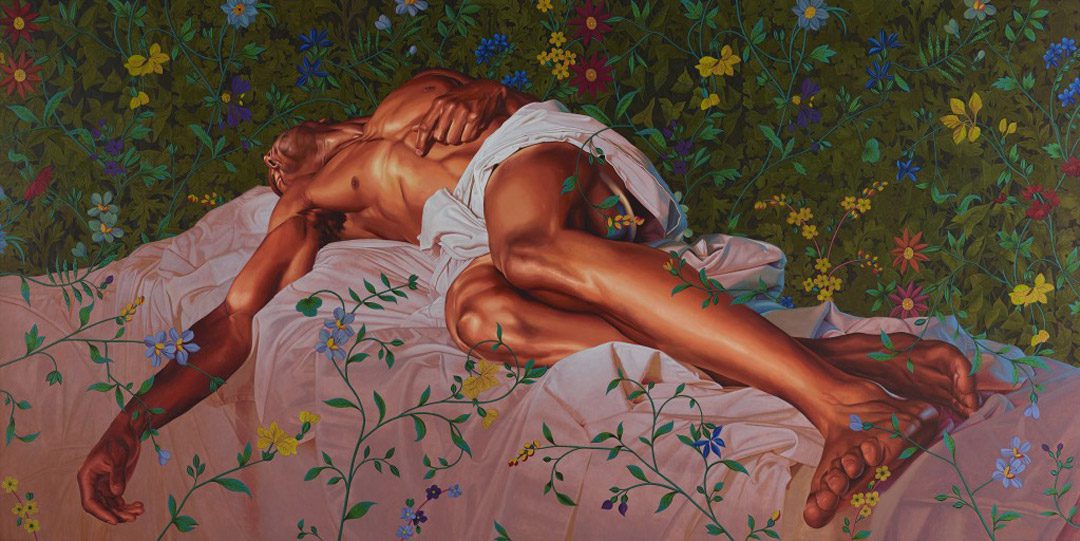
Harmonia Rosales, an Afro-Cuban American artist based in Los Angeles, has centered her work on Black female empowerment by depicting Yoruba religion and its synchronicity with Greek gods and catholic saints.
Rosales’s work became known online after her variation on Michelangelo’s Creation of Adam, representing God and humankind as Black women. The painting went viral and with no shortage of controversy. In a 2022 presentation at UCSB Interdisciplinary Humanities Center, Rosales said that to fully understand her art, we needed to understand her artist DNA, which consists of three components: culture, heritage and life experiences.
When taking her artist DNA into consideration, Rosales’s approach to her art is clear. By capturing everyone’s attention through the visual parallelisms with Renaissance imagery, she takes this opportunity to tell the stories of the Black subjects in her paintings. In reimagining the work of the masters, Rosales opens a conversation around the depiction of white hierarchy and the representation of beauty in fine art, but her work also functions as a way to heal and promote self-love.
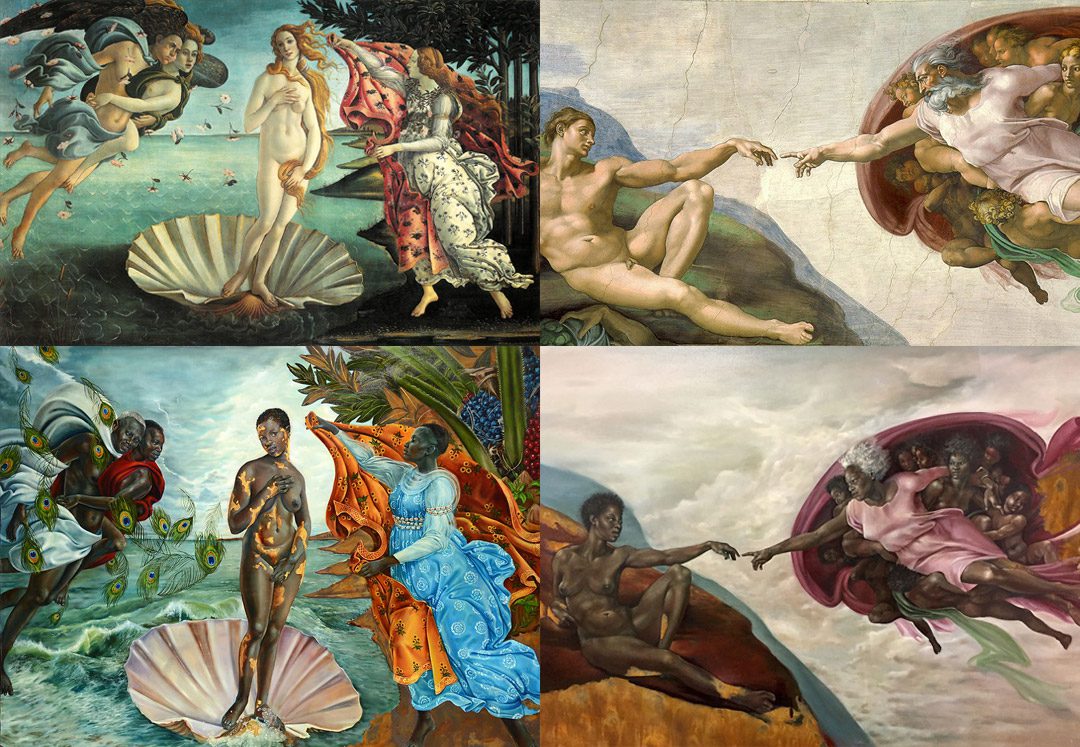
Thelonious Stokes, the first African American artist to graduate at the Florence Academy of Art in Italy, is a figurative oil painter, performer, songwriter and filmmaker from Chicago. He examines Black identity and representation through various personal, social, and historical lenses. His painting ‘Pietà’ is an example of how he sought to reconceptualize the Black experience. In the traditional representation of the Virgin holding fallen Christ, Stokes draws parallels to the story of Mamie Till, exposing her son, Emmett Till, in an open casket funeral. In referencing paintings from the past, hardly any African people have been painted the way he is trying to paint them, so producing work that had to be produced is a responsibility he has taken on. Currently working and living in Florence, Italy, Stokes serves as an Academic Drawing Professor at Polimoda Fashion School.
So what is the relevance of Renaissance art in today’s Western society? It was about modernity and showing what it meant to be out of the Middle Ages; now modernity is to show our multi-faceted humanity. Without taking anything away from the greats of the past as this seems to be a fear of many – how is that even possible? – contemporary artists have looked back at the grand European tradition of painting to show us the ways in which all people can depict themselves in the present. If we need to change, we need to reimagine, and who better to learn from than from the masters?
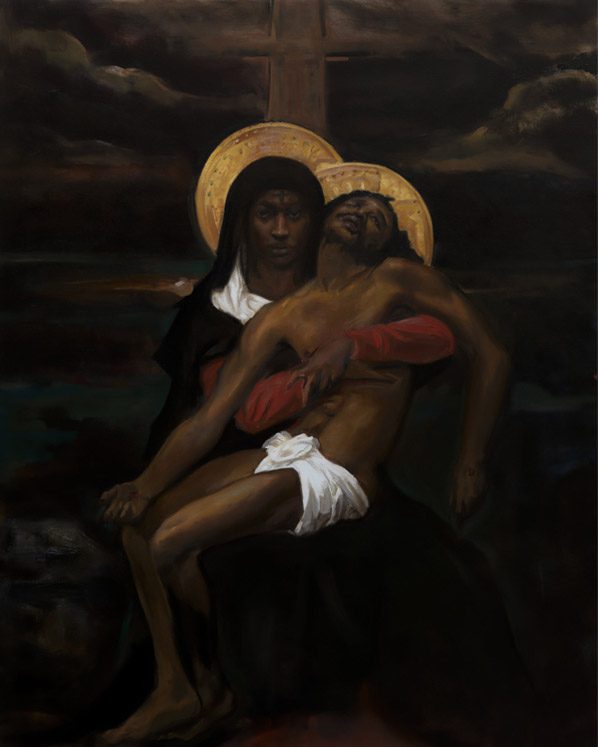
If you like this content,
Please consider supporting us!
Please consider supporting us!
Accento operates as a self-funded project, and every new membership, purchase, or reshare plays an important role in our growth and content creation.


